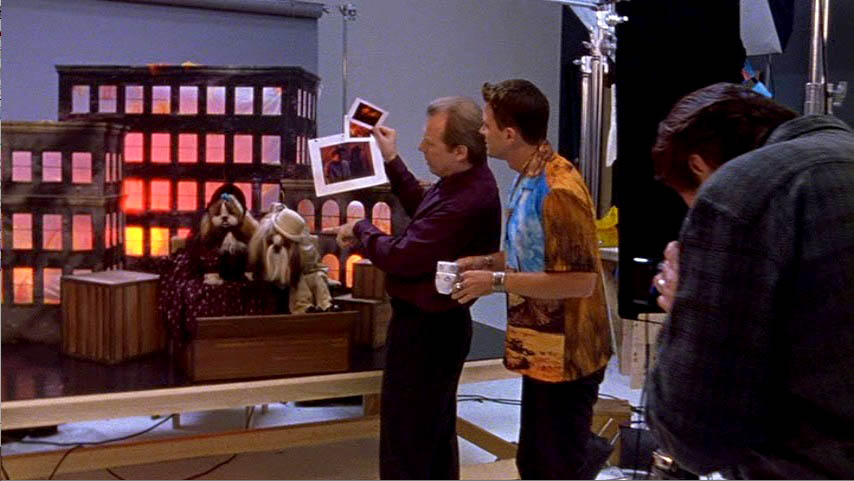Joseph T. Garrity

AS: When you do that first meeting is part of it showing that you can come up with those ideas?
JG: In the interview you’re coming in reacting to something you’ve read and what I normally do- I bring in imagery with me. I’m not going to design any sets but I’m going to bring in something that kind of shows, gives the director a sort of visual sampling of what I thought I got out of the film- leaving it open at the same time. And then you have to be able to in words say, I’ve read this and here’s what really said something to me.
You’re really interviewing the director as well. Do I want to work with this guy and does he want to work with me? Cause it’s going to be an intensive series of months that you might be working together. Am I enjoying my conversation- will I enjoy this on multiple occasions at all hours of the day? And will I enjoy working with this person? You’re walking in with credits that obviously have helped get you to the interview. So most of the time, if you’re well into your career, you’ve kind of proven to yourself that you can make movies and people like doing that with you. How you react to some of the peculiar problems that this particular script has and how you might approach it will tell the director, This guy’s good. Boy, he knows what he’s talking about and he’s brought up things that I would never have thought about and he has some great ideas. So you want to have some great ideas. But at the same time you might be going out on a limb in a whole other direction than this director’s gonna take it. So you’ve gotta be able to figure out what’s going on.
AS: So in that first interview you might show up with some ideas and be like, Well, we could do this, build this a certain way…
JG: This is a way we could go- I like this. This is another way we could do it. You might find out where the director’s leaning towards if you could show options. Sometimes I’ve met directors that have elevated what I thought was some ordinary stuff into something extraordinary from how they plan to approach the material. Some directors can be really inspiring. It doesn’t happen a whole lot, but it does. And when you meet those people you’re like, Wow, this guy is really passionate about this. It makes everyone around him better. That’s happened on occasion. That’s a good director, by the way.
AS: And how about DP’s?
JG: Well there’s something I’ve read in books that’s called “the trinity” which is that the chief visualizers are the director, the DP, and the production designer. The DP is a vital person that you want on your team, on your side.
The title production designer came about, as you probably know–
AS: With Gone with the Wind?
JG: Gone with the Wind with William Cameron Menzies. Because that designer went beyond, and really storyboarded the whole film and really got himself networking with all the various departments. And that’s why the production designer credit happened. It was created by David O. Selznick. Although Art Director pretty much says what we are- we’re directing the art of the movie. Production Designer- you’re designing the production.
Just watched Mr. CHURCH and found your name. I’m a Garrity also so it was neat to see it. I really enjoyed Mr. CHURCH and will now be watching the others mentioned, beginning with Waiting for Guffman. Nice to meet you.
….Joe – happy for you. Wonderful life you’ve designed. Continued good fortune to you!